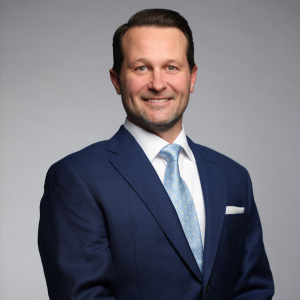Reflections on a life in long-term care
Following the recent sale of the family business of 35 years—a 231-bed skilled nursing facility—to a large Catholic healthcare system in Chicago, I can’t help but think about where we began and how far the industry and field of long-term care has come. My mother was the instigator in all this when I began working with her in 1970 at age 15 at a “retirement hotel” located in a rough part of Chicago. The Wilton house was an SRO (single room occupancy), a flophouse basically. The owners wanted to attract seniors to the existing housing mix of younger black and Appalachian residents and some mentally ill persons. It was quite the precursor to what we are seeing today in long-term care.
Needless to say this was a very interesting experience for a sophomore in high school. My career ended one Saturday night when a stray bullet pierced the front window and lodged behind the reception desk where I was working the phones. Still, working with seniors was an experience that stayed with me.
LESSONS OF CARING
Ballard Nursing Center was my next foray into long-term care. Established in 1977 as a 231-bed SNF located in Des Plaines, a suburb of Chicago, Ballard was a traditional nursing home with three resident floors and a basement that housed support services (kitchen, laundry, beauty shop, therapy room, central supply, etc.). At the time, Ballard was a state-of-the-art facility with large rooms, nurses stations in the center of the floor with one hall of three-bed rooms and the opposite hall of two-bed rooms.
The building had fairly independent residents on the first floor who required only medications and minimal assistance with bathing and eating. These residents were affectionately referred to as “the walkie-talkies.” They were always a lot of fun to visit with and had colorful stories about their lives. The second floor was the skilled floor on which about half the residents were in wheelchairs but most could still walk short distances and needed more assistance with activities of daily living.(ADL scores were 50 percent with 5-6 ADL dependencies in 1985 as compared to over 66 percent in 2004.) Residents were much more concerned about their health and that dominated conversations. I quickly learned to change my greeting from “How are you?” to “How is your day going?”
This was very difficult for me in the beginning. I got close to many of the residents and as they died off I felt like I was losing family members. This taught me the lesson of being caring but to not get too close. The third floor was for the senile—always a fun group who did a lot of pacing and smoking cigarettes. In fact almost everybody smoked back then, including the staff.
STRATEGIC PLANNING
A sea change occurred when hospitals were hit with DRGs (diagnosisrelated groups) in 1983. Ballard is located less than a mile from Advocate Lutheran General Hospital (ALGH), at the time a 645-bed teaching hospital with a level-one trauma center. Today it is licensed for 608 beds and had a peak census in 2008 of 280. In 1983, it had a peak census of more than 600 inpatients. I approached the administrator of ALGH in 1986 about collaborating. A geriatric teaching fellowship was launched and an orthopedic protocol was developed to move post-surgical hip and knee replacements to the nursing home for rehab. The hospital average length of stay was reduced from 11 days to five. A teaching nursing home was born. Many lessons were learned by both of us and I especially learned about hospital and physician politics. It was a baptism into a whole new world. By 1990 we were full with a 30-bed orthopedic unit—80 percent Medicare and 20 percent insurance. We were riding high.
As competition in our market increased, the team began to develop a new strategic plan which included redesigning the physical plant and developing specialty medical programs to diversify patient populations. We transformed the three floors into six separate units by dividing the floors in half and adding smaller nursing stations on the west side of the building. We reduced the three-bed rooms to large semi-privates and installed in-wall oxygen and suctioning devices to handle pulmonary patients including the ventilator-dependent. The pulmonary program grew rapidly to 58 beds with the addition of a second 29-bed unit. The strategy was to reduce capacity but increase the average rate by increasing the number of insured patients. The pulmonary program has grown to more than 100 patients with approximately 30 being on vents.
In 1994, Illinois passed the Alternative Healthcare Delivery Act and the Sub-Acute Hospital Demonstration Project. Ballard was selected to be one of 10 providers statewide—five nursing homes and five hospitals—to collect data on patients with shorter length of stays for high-acuity populations. While this project had no additional funding it distinguished Ballard as having significantly greater clinical capacity with superior outcomes. Insurance utilization grew from 15 percent to 30 percent. At this time we decided to move completely into subacute and stopped admitting LTC residents.
The Prospective Payment System came in 1998 and everybody was aggressively chasing the straight rehab patient while we blended the complex medical and rehab. While our costs were higher the rates kept climbing. In 2000, we developed a dialysis program and installed a nine-chair hemodialysis treatment clinic with a 36-patient capacity. Medicare was not the most attractive payer but we made it work and it really paid off with RUGs-IV as our Medicare rates increased by 30 percent. In 2008, a Chronic Heart Failure program with cardiac monitors was launched and now accommodates 24 patients. The latest addition is an oncology program.
The current rehab census runs between 110 and 125 with 35 percent insured (predominately under-65, this segment represents 25 percent of the overall census). With the recent selection as a pilot site for the Advocate Cares Accountable Care Organization, our rehab census has grown even more. Advocate chose Ballard because of the diversity of medical acuity with very low re-hospitalization rates—less than five percent as compared to 28 percent nationally.
Eli Pick, CNHA, CAS, FACHCA, is President of Post Acute Innovations. He serves on the editorial advisory board of Long-Term Living. Contact him at epick@postacutein.com.
I Advance Senior Care is the industry-leading source for practical, in-depth, business-building, and resident care information for owners, executives, administrators, and directors of nursing at assisted living communities, skilled nursing facilities, post-acute facilities, and continuing care retirement communities. The I Advance Senior Care editorial team and industry experts provide market analysis, strategic direction, policy commentary, clinical best-practices, business management, and technology breakthroughs.
I Advance Senior Care is part of the Institute for the Advancement of Senior Care and published by Plain-English Health Care.
Related Articles
Topics: Articles , Facility management , Leadership











